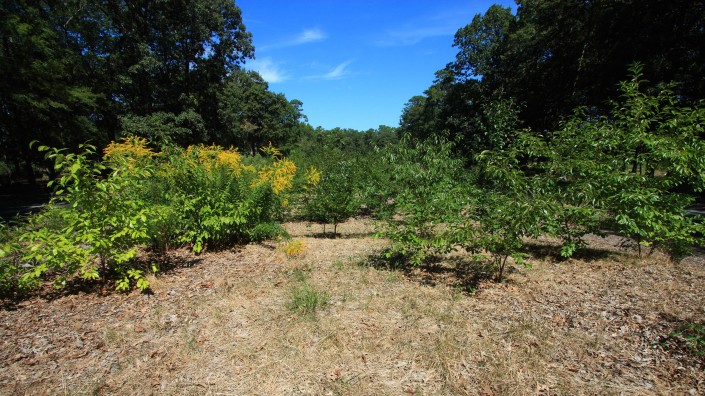Photo from the field
Natural Succession at its finest
By Ben Wurst, Habitat Program Manager
A former golf course called “Ponderlodge,” now referred to as Villas WMA and officially part of Cape Island Wildlife Management Area in Lower Township, NJ is slowly reverting back to forested habitat. Forests and trees are good for migratory and resident wildlife, the environment, and people! Trees provide food and cover to migratory birds. Many early successional woody species like, Winged sumac, Black cherry, Sassafras, and Mulberry are already established on old fairways on site. Other trees like White oak, Willow oak, and Pitch pine are sprouting from seed, especially in areas where the overstory of trees acts like a nursery for these to grow quickly. As you may know trees naturally sequester or capture CO2. Over time, large amounts of carbon are stored as biomass in the parts of a tree (leaves, branches, roots, and trunk). A one acre reforestation site can sequester an estimated 3 metric tons of CO2 in one year. In 20 years that’s 65 metric tons of CO2 that is removed from the atmosphere. Once many of the fairways that we are working dilagently to reforest with the NJ Division of Fish and Wildlife are reforested, over 170 acres forested habitat will exist on site.

This summer has been tough on many of our plantings. The severe drought in Cape May County has killed a large amount of seedlings that were planted in early 2009. However, when planting we choose to overstock or plant at a higher density to allow for some mortality to occur. Only the strong survive and will be more adaptable to future droughts!
Next year we plan to plant more seedlings on additional fairways to convert “fairways to forests.” We will be needing volunteers to assist with the plantings. If you’d like to volunteer to help plant trees send me an email and I’ll let you know when we’ll be planting (sometime in March).